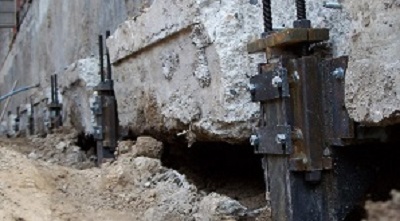
The foundation repair of a home or building is its most critical structural component. It supports the entire structure, ensuring stability and safety. When foundation issues arise, even minor ones, addressing them promptly is essential. Delaying foundation repair can lead to significant damage, higher repair costs, and potential safety hazards.
Understanding Foundation Problems
Foundation problems can result from various factors, including soil movement, water damage, poor construction, or natural settling over time. Common signs of foundation issues include cracks in walls or floors, uneven floors, sticking doors or windows, and gaps between walls and ceilings. Ignoring these warning signs can allow minor problems to escalate into major structural damage, compromising the integrity of the building.
Consequences of Delaying Foundation Repairs
Neglecting timely foundation repair can have serious consequences. One of the most significant risks is the worsening of structural damage. Small cracks can expand, leading to wall separation, sagging floors, or even partial collapse in extreme cases. Water infiltration is another common issue. Cracks and gaps in the foundation can allow water to seep into basements or crawl spaces, causing mold growth, wood rot, and damage to personal property.
Additionally, delayed repairs often result in higher costs. Minor foundation issues are typically less expensive to fix than severe structural problems. Ignoring early signs may require extensive work, including underpinning, slab replacement, or extensive waterproofing. Timely repair not only protects the home but also reduces financial strain.
Benefits of Early Foundation Repair
Addressing foundation problems promptly offers multiple benefits. Early repair maintains the structural integrity of the building, preventing further deterioration. It also protects the value of the property, as foundation issues can negatively impact resale potential. Homes with a history of timely foundation maintenance are more appealing to buyers and can command better market prices.
Timely repair also improves safety. Uneven floors, wall cracks, and compromised support pose hazards to residents. Prompt intervention ensures a stable living environment and reduces the risk of accidents or injuries. In addition, early repair helps prevent secondary problems, such as water damage, mold growth, and pest infestations, which can develop when foundation issues are left unresolved.
Common Foundation Repair Methods
Foundation repair methods vary depending on the type and severity of the issue. Some common solutions include:
- Slab Jacking or Mudjacking: Lifting sunken concrete slabs using grout or other materials to restore a level surface.
- Piering: Installing steel or concrete piers beneath the foundation to stabilize and support the structure.
- Crack Repair: Sealing foundation cracks with epoxy or polyurethane to prevent water infiltration and further expansion.
- Waterproofing: Adding drainage systems, sump pumps, or exterior barriers to manage water and protect the foundation.
Each method requires professional assessment to determine the most effective approach. Experienced foundation repair specialists evaluate the structure, soil conditions, and type of damage to provide a tailored solution that ensures long-term stability.
Preventive Measures for Foundation Health
In addition to timely repairs, preventive measures can help maintain a healthy foundation. Proper drainage around the property, regular inspection of the foundation and surrounding soil, and managing landscaping to avoid excessive water retention near the foundation are essential steps. Routine maintenance helps detect potential problems early and extends the lifespan of the foundation.
Conclusion
Timely foundation repair is crucial for protecting the structural integrity, safety, and value of a property. Early intervention prevents minor issues from developing into major damage, reduces repair costs, and safeguards the living environment. By addressing foundation problems promptly and implementing preventive measures, property owners can ensure long-lasting stability and avoid costly future damage.

